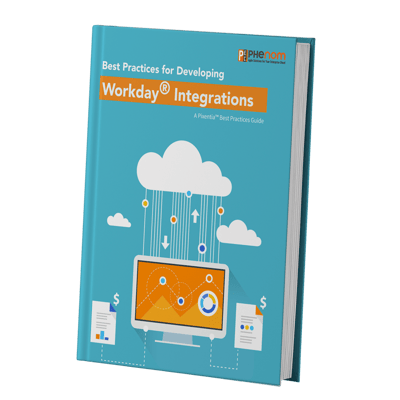
In his webinar preview of the upcoming Global Human Capital Trends 2017 report, Josh Bersin predicted 2017 will be the year everything is “digital,” so much so that the word “digital” will soon be dropped from our discussions because it won’t differentiate anything. [1]
In the same way, we expect “Internet of Things” will disappear as we learn to connect anything to anything—or anybody. IoT it is not a future event; we are living it now.
Partnership Between Machines and People
The relationship between machines and people is undergoing radical change. We see many dire predictions of robots replacing people and a future of a “world without work.”[2] The emphasis, though, is not on replacing people. Automation of tasks enables repetitive work at lower costs and higher quality. At the same time, “it will free people to focus on the more human elements of their jobs, like creative problem-solving and collaboration.”[3] And it will require workers skilled at interactive with rapidly changing technology.
IoT is Getting Personal
IoT will embed communications between machines into every HR and work process, creating a new world of feedback and performance support. Deloitte Canada started with sociometric badges that measured stress in work situations and correlated these data with other location, people, and productivity factors. Due to the study, the company redesigned both their approach to teams and their office spaces. [4]
It would be impossible to describe in any detail how the IoT will impact your organization without a thorough analysis. The future is too uncertain—but here are some of the things we know.
Transform your HR process delivery with Chasma Lexy
Benefits of IoT for Employees
Employee Wellness. We are now well aware of the impact employee wellness can have on engagement and productivity. Wearables and other sensors can gauge respiration, blood pressure, movement, blood pressure, and many other health indicators to alert employees to health conditions, fatigue, or stress. We can design better employee-centered wellness programs and direct resources to the right places.
Safety. We have been using safety sensors for decades, but the ability to embed them into clothing and wearables makes them even better. We no longer need to rely on timetables or guesswork to know if an employee is approaching exposure limits.
Collision detectors built into forklifts are useful safety enhancements, but embedding them in wearables for people walking on a shop floor or warehouse can do even more.
Continuous Performance Development. We have become separate from our phones, and we can use them to enhance the employee experience. For example, they can enable us to record coaching conversations or document them in seconds. We can use the information to coach both manager and employee.
Location and Attendance. Beacons and other proximity technology can help manage time and attendance, including training. Badges, mobile devices, or other sensors can tell us where employees are at any time. They can be used to prompt employees to get up and move about if they have been sitting too long without a break.
VR/AR. Augmented reality and virtual reality have the power to transform learning by placing learners into simulated situations and provide data on how they are progressing. Technicians can use AR glasses to view 3D models of equipment they are servicing to reduce errors and speed up the work. We can place leadership trainees into simulated situations to build their confidence in handling difficult conversations.
HR’s IoT Challenges
Privacy. Solving the privacy puzzle will be a challenge. Employees may object to biometric or sociometric 
monitoring unless your culture supports high levels of trust. How you communicate what information you collect, how you use it, and how you keep it secure will prepare them, but the foundation must be in your culture. We can also expect the government to weigh in on privacy, especially in terms of health issues.
Security. An entire industry has grown around security, with experts becoming specialists in IoT. However, the weak point of any security operation is the people who use the technology. Data security must be a core principle, learned well and reinforced frequently.
Accessibility. IoT adds another layer of complexity to accessibility concerns. Consider, for example, augmented reality for people with vision or hearing challenges.
Learning. The LMS is morphing from being the center of learning to becoming only one of its components. Each organization will need to plan how they will handle the need for a Learning Record Store (LRS) or other data management tool, and how they will aggregate the data from disparate platforms.
Recruiting. Staffing analytics teams is hard enough, but the growth of connectivity will spawn a new collection of technology specialists. Organizations moving into IoT deployment will not want to get behind the curve.
Summary
How your organization meets the connected future will depend on your people, and how well your HR team manages the balance of information and privacy. How well you prepare your people for what is coming will have a significant impact on the results. Get ready for an exciting future.
References :
1. Bersin, Josh. "HR 2017: Bersin by Deloitte Predictions for the Year Ahead." Bersin by Deloitte. January 18, 2016. .
2. "A World without Work?" World Economic Forum. 2016.
Best Practices for developing workday integrations
Workday cloud integration provides a complete set of tools to connect all your human capital management applications.

PhenomᵉCloud is a comprehensive technology solutions provider committed to empowering businesses to overcome challenges, enhance their workforce capabilities, and achieve superior outcomes.

Leave a Comment